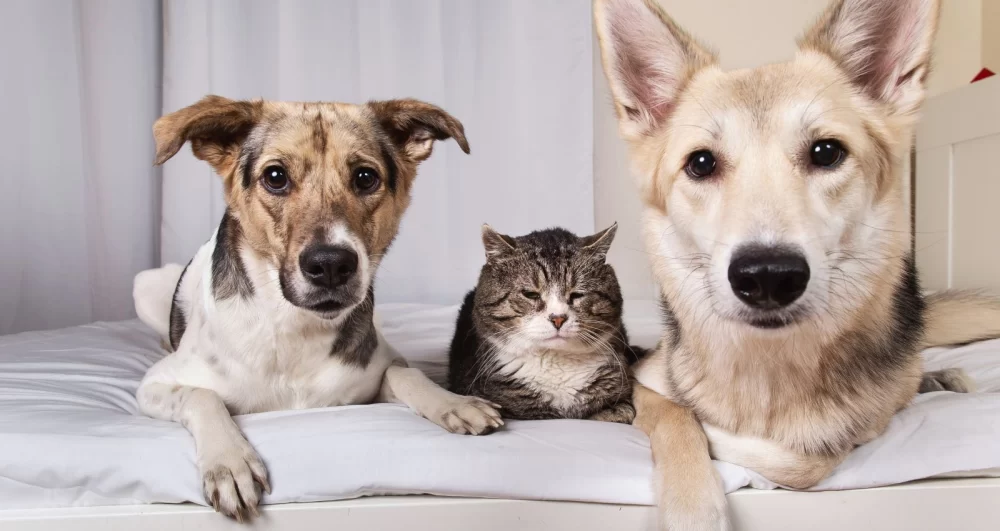Pet Stress Relief Techniques: How to Help Your Pet Feel Calm and Relaxed
As pet owners, one of the most heart-wrenching experiences is seeing our beloved companions stressed or anxious. Pets, just like humans, can experience various forms of stress, whether due to environmental changes, loud noises, or separation anxiety. Fortunately, there are several effective stress relief techniques you can use to help your pet feel more relaxed and comfortable. In this article, we will explore a range of techniques and strategies to help relieve stress in your pet, ensuring they live a happier, healthier life.
Recognizing Pet Stress: Signs Your Pet May Be Anxious
Before you can implement stress relief techniques, it’s important to recognize when your pet is stressed. Every pet is different, but there are common signs of stress to look out for:
- Excessive barking or meowing: Pets may vocalize more when they are stressed, especially when they are anxious or scared.
- Changes in behavior: A normally active pet may become lethargic, or a calm pet may start exhibiting signs of aggression.
- Unusual hiding: Pets experiencing stress often seek solitude and may hide in dark or quiet places.
- Over-grooming: Pets may lick or chew excessively as a way to self-soothe when they are feeling anxious.
- Loss of appetite: Stress can affect your pet’s eating habits, leading them to eat less or refuse food altogether.
Effective Techniques for Pet Stress Relief
Once you’ve identified that your pet is stressed, it’s time to try different stress relief techniques. Below are some of the most effective ways to help your pet feel calm and relaxed:
1. Creating a Comfortable and Safe Environment
Your pet’s environment plays a big role in how they cope with stress. A safe, comfortable, and quiet space can work wonders for reducing anxiety. Here’s how to create a stress-free environment for your pet:
- Provide a quiet retreat: Ensure your pet has a designated area where they can retreat to if they feel overwhelmed. A cozy bed, blankets, or soft lighting can help create a calming space.
- Keep noise levels low: Loud noises like thunderstorms or fireworks can trigger anxiety in pets. Consider using noise-canceling headphones for pets or playing calming music to mask sudden noises.
- Maintain a consistent routine: Animals feel more secure when they know what to expect. Try to maintain a regular feeding, walking, and sleeping schedule to help your pet feel more at ease.
2. Physical Comfort Techniques for Calming Pets
Physical touch can help calm a stressed pet. Here are some physical comfort techniques to try:
- Gentle petting and massage: Gently massaging your pet’s back or neck can help relax them. Be sure to keep the touch calm and soothing.
- Hugging or holding: For pets that enjoy being close to you, offering a gentle hug or holding them can provide comfort and reassurance during stressful moments.
- Pet-specific calming products: Consider investing in products designed to reduce anxiety, such as anxiety wraps, calming collars, or pheromone diffusers, which can provide continuous comfort for your pet.
3. Natural Remedies for Anxiety Relief
Sometimes, natural remedies can offer great relief for anxious pets. Here are a few options to consider:
- Herbal supplements: Certain herbs like valerian root, chamomile, or lavender have calming properties and can help reduce stress in pets. Consult your veterinarian to find the right herbal remedy for your pet.
- CBD products: Cannabidiol (CBD) has gained popularity as a stress-relief solution for pets. Studies have shown that CBD can help reduce anxiety and promote relaxation in pets, but always consult a veterinarian before using CBD products.
- Aromatherapy: Essential oils like lavender and chamomile are known for their calming effects. Diffusing these oils in your home can help create a soothing atmosphere for your pet.
4. Distraction and Play for Stress Relief
Engaging your pet in play and positive distractions is a great way to help them relax and forget about their stressors. Here are some playful techniques to try:
- Interactive toys: Puzzle toys, treat dispensers, or Kong toys can keep your pet mentally stimulated and distracted from their anxiety.
- Exercise and outdoor play: Physical activity can help reduce stress by releasing endorphins. Taking your pet for a walk, playing fetch, or letting them explore outdoors can help them expend pent-up energy and calm down.
- Training sessions: Short, positive training sessions can help redirect your pet’s focus and improve their behavior. Training also helps strengthen the bond between you and your pet, reducing their stress.
Why Hidden Brook Veterinary is the Right Choice for Your Pet’s Stress Relief
If your pet is experiencing severe anxiety or stress, it’s important to consult with a veterinarian. Hidden Brook Veterinary offers expert advice and treatment options to help manage your pet’s stress. Our team is dedicated to providing compassionate care for your furry friend and ensuring they feel safe and relaxed. Whether you need advice on calming techniques or assistance in choosing the best stress-relief products, we’re here to help.
Real-Life Examples of Successful Stress Relief
One of our clients, Sarah, had a rescue cat named Bella who suffered from severe anxiety due to past trauma. Bella would often hide and refuse to eat, making it difficult for Sarah to care for her. After discussing her concerns with our team at Hidden Brook Veterinary, we recommended a combination of pheromone diffusers and a calming diet. Over time, Bella became more relaxed, and Sarah was able to form a stronger bond with her cat. Stories like this show how the right approach can make a world of difference in your pet’s well-being.












